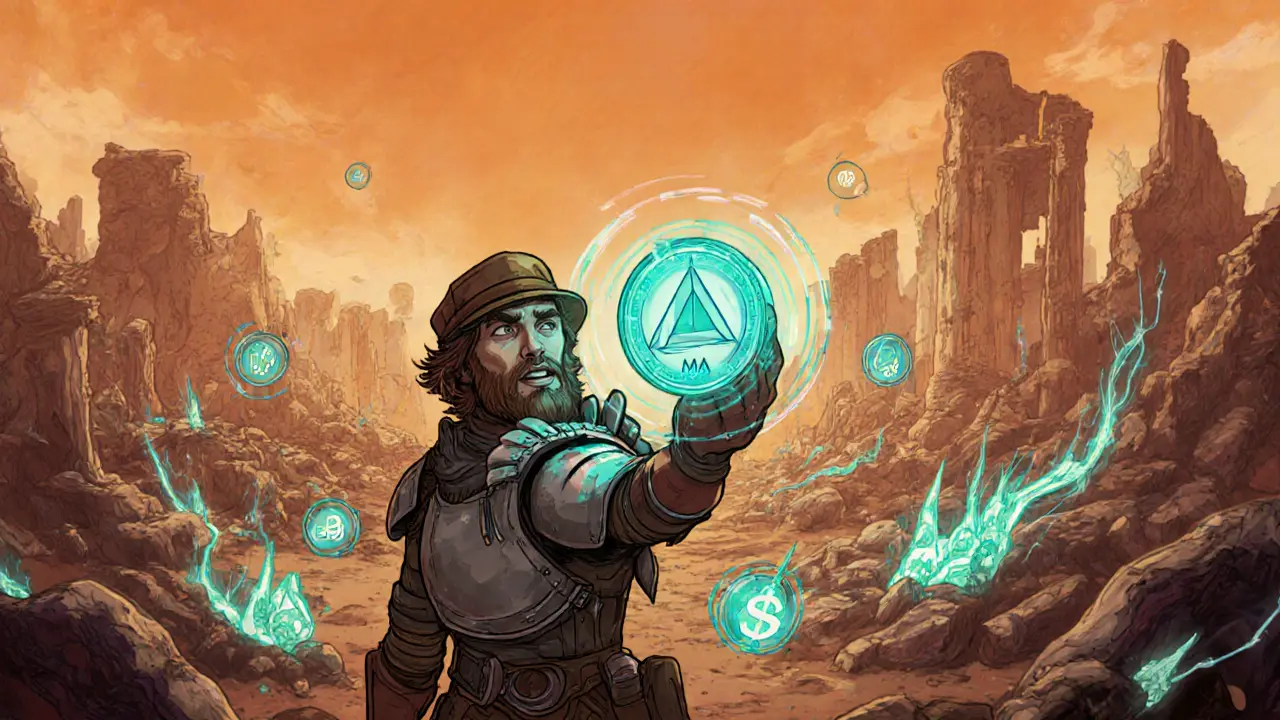Cardano Gaming Token: Play‑to‑Earn, Tokenomics & NFT Integration
When working with Cardano gaming token, a play‑to‑earn digital asset built on the Cardano blockchain. Also known as Cardano gaming asset, it lets gamers earn rewards while they play, often tied to the native ADA token. This space blends crypto and gaming, so you’ll see terms like NFTs, smart contracts, and tokenomics pop up fast. If you’re curious about how a token can power an entire gaming economy, keep reading – we’ll break it down step by step.
The foundation is Cardano blockchain, a proof‑of‑stake network known for low fees and formal verification. Because Cardano supports scalable smart contracts, developers can launch complex game logic without choking the network. Cardano gaming token requires these contracts to manage in‑game assets, reward distribution, and marketplace rules. In turn, the play‑to‑earn model lets players earn tokens for achieving milestones, winning battles, or creating content drives user retention and creates a self‑sustaining economy. The model influences token value: higher activity often pushes demand for the token, which can boost its market price.
Why Cardano Gaming Tokens Matter
One of the hottest trends is the marriage of NFTs with gaming. On Cardano, NFTs represent unique in‑game items, skins, or characters that can be owned, traded, or upgraded. When an NFT is tied to a Cardano gaming token, it adds real utility: the token can unlock exclusive quests, grant voting rights in game governance, or serve as collateral for staking. This synergy enhances the token’s usefulness beyond simple speculation.
Behind every token is its economic design. Key attributes include total supply, emission rate, and reward split between players and developers. For example, many projects cap their token at a few hundred million, then release a fraction each week based on active users. This tokenomics approach aims to balance inflation with growth, keeping the token attractive for both gamers and investors. Understanding these attributes helps you assess whether a token is a short‑term hype or a long‑term utility asset.
Liquidity matters too. Most Cardano gaming tokens list on decentralized exchanges (DEXes) like Minswap or SundaeSwap. Traders watch price moves, volume spikes, and pairings with ADA. A healthy DEX market means players can quickly cash out earned tokens, reinforcing the play‑to‑earn loop. At the same time, developers monitor on‑chain metrics – wallet growth, transaction counts, and smart‑contract calls – to fine‑tune reward formulas.
Security is a non‑negotiable piece of the puzzle. Because Cardano’s smart contracts are formally verified, they reduce bugs that could let cheaters steal assets. Still, users should keep their wallets secure, enable hardware‑wallet protection, and verify contract addresses before interacting. A single breach can erode trust in the entire token ecosystem.
Looking ahead, cross‑chain bridges may let Cardano gaming tokens move to other ecosystems, opening up larger marketplaces and collaborations with non‑Cardano games. Interoperability could boost adoption, but it also adds complexity and risk, so developers are testing bridges carefully.
All this background sets the stage for the deeper dives below. In the collection ahead you’ll find practical guides on tokenomics, step‑by‑step how‑tos for claiming airdrops, analysis of recent game launches, and security checklists for users. Whether you’re a gamer wanting to earn ADA or a developer eyeing Cardano’s low‑fee environment, the articles that follow give you the actionable insights you need to navigate the Cardano gaming token landscape.
Chains of War (MIRA) Crypto Coin Explained - Token, Game, and Price
Posted By Tristan Valehart On 17 Mar 2025 Comments (25)

Learn what Chains of War (MIRA) crypto coin is, how it works within the Cardano gaming ecosystem, its market performance, and risks before you consider investing.
READ MORE